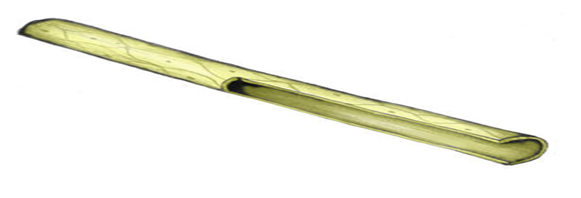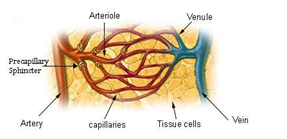Introduction
The heart is considered the engine of human beings. Its primary function is to circulate blood to different parts of the body. The heart has three blood vessels namely arteries, veins, and capillaries, and are discussed next.
Arteries
These are muscular, elastic blood vessels that carry blood away from the heart and to other parts of the body. The major types are the pulmonary arteries and systematic arteries. Pulmonary arteries receive deoxygenated blood from the body and also transports deoxygenated blood from the heart to the lungs while systematic arteries transport oxygenated blood to other parts of the body through the arterioles. There are two types of systematic arteries.
They are usually differentiated by the structural composition; either elastic or muscular. The elastic ones are generally larger while the smaller arteries are muscular. According to Gray and Henry (2000), the aorta is the largest artery and responsible for blood circulation to the brain while arterioles are the smallest and are responsible for microcirculation. The structure of an artery is characterized by an inner layer (tunica intima), middle layer (tunica media), and external layer (tunica externa). The diagram below summarizes the structure of an artery. (Gray & Henry, 2000).

Veins
These are less muscular blood vessels that carry waste-rich blood back to the lungs and heart at low pressure. All veins with the exception of the pulmonary vein and the umbilical vein carry deoxygenated blood from the rest of the body to the heart. They contain valves to allow the unidirectional flow of blood. The structure of a vein is characterized by an outer layer, a middle muscular layer, and an inner layer. The diagram below summarizes the structure (Gray & Henry, 2000).

Capillaries
These are blood vessels responsible for the exchange of gases, sugars, and other nutrients within the circulatory system, and the release of excess heat from the body. They are single-cell thick to allow for diffusion of gases that is oxygen and carbon dioxide, and nutrients from the intestines to be absorbed into the bloodstream. It also collects waste products from the kidneys in order to be removed from the blood. The diagram below shows a structure of a capillary (Hopkins & Wright, 1993).

Similarities and Differences
The structures of the arteries and the veins are both characterized by the presence of the outer, middle, and inner layers. Capillaries, on the other hand, are layered to allow diffusion to take place. The arteries are strong compared to the veins and capillaries. The arteries carry blood at a higher pressure compared to the veins and capillaries. The arteries transport deoxygenated blood from the heart to the lungs while the veins carry de-oxygenated waste-rich blood to the heart.
The arteries and capillaries lack valves whereas veins have valves to allow for unidirectional flow of blood. Unlike the arteries and capillaries, all veins generally carry deoxygenated blood from the rest of the body back to the heart. They all serve to transport blood from one point to another of the body. It is therefore clear that the three major blood vessels, the arteries, veins, and capillaries have significant differences and similarities as well as in their respective functions. The relationship between the arteries, veins, and capillaries is shown by the figure below (Hopkins & Wright, 1993).

Conclusion
The physical differences that exist in the discussed blood vessels exist to suit the functionality of each blood vessel. The collective functionality of all is an indication of a healthy body.
References
Gray. F. & Henry, D. (2000). Anatomy of the Human Body. Philadelphia: Lea & Febiger, Bartleby Co.
Hopkins, J. & Wright, J. D. (1993). Human Biology and Health. Englewood Cliffs, New Jersey: Prentice Hall.